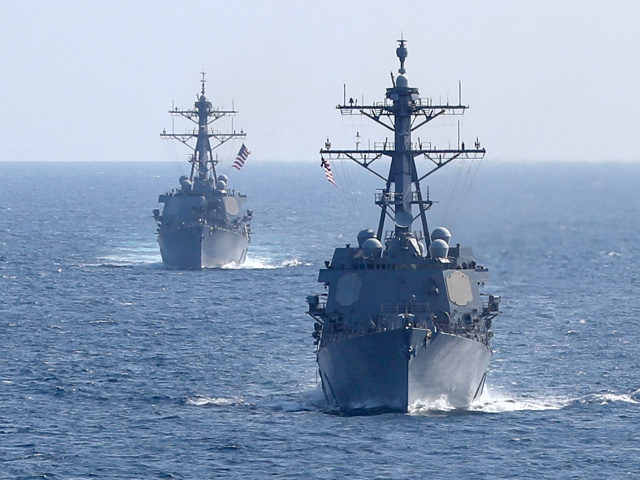Four U.S. Navy ships and a British Royal Navy frigate entered the Barents Sea, north of Russia, to conduct Arctic security operations on May 4, the Pentagon confirmed Monday.
The action marks the first time U.S. Navy surface vessels have entered the Barents Sea since the mid-1980s, Radio Free Europe/Radio Liberty (RFE/RL) reported on Monday.
The operation comes as Russia continues to expand its military capabilities in the Arctic. Russian officials reportedly view the Arctic as a valuable geostrategic region offering energy reserves, defense capabilities, and potentially lucrative northern shipping routes allegedly opening due to climate change.
China has also been eyeing the region, claiming to be a “near-Arctic state” as it angles for a stake in the northern shipping routes, a potentially shorter path from Asia to Europe, RFE/RL reports.
“Allied and partner navies must remain proficient in all operating environments to ensure the continued security and access to the seas,” the U.S. Navy’s 6th Fleet said in a statement shared with RFE/RL on Monday. “This is especially critical in the Arctic, where the austere weather environment demands constant vigilance and practice.”
The U.S. Navy notified the Russian Defense Ministry ahead of the operation to “avoid misperceptions, reduce risk, and prevent inadvertent escalation,” according to the statement.
Russia’s Northern Fleet is tracking the naval vessels, Russian news agency Interfax reported on Monday.
“The forces and means of the Northern Fleet have begun tracking the actions of the NATO [North Atlantic Treaty Organization] naval strike group,” the Russian Defense Ministry said in a statement shared by Interfax on Monday.
Russia claims that NATO’s ballistic-missile defense system is designed to alter the strategic balance against Moscow’s nuclear forces. The U.S. and arms experts refute Russia’s claim and say that the ballistic-missile defense system does not alter the strategic balance, according to RFE/RL.
On May 1, two of the U.S. Navy’s destroyers and the British Royal Navy frigate conducted a separate drill in Norwegian Sea above the Arctic Circle, the Barents Observer reported last Friday.
The Barents Sea lies between Russia’s northwestern coast and Norway’s Svalbard Archipelago.
Beijing commented on the Barents Sea operation on Tuesday in an article published by the Chinese Communist Party (CCP) newspaper Global Times.
The Barents operations followed last week’s “freedom of navigation” operations by the U.S. Navy in the South China Sea. On April 28, a U.S. warship entered the territorial waters off the Xisha [Paracel] Islands in the South China Sea without China’s permission. The Southern Theater Command of the People’s Liberation Army [PLA] deployed air and navy forces to monitor and verify the ship, and warned it to leave, according to Senior Colonel Li Huamin, a spokesperson of the command.
The Paracel Islands, referred to by China as the “Xisha Islands,” are the sovereign territory of Vietnam, invalidating China’s claim that a U.S. warship entered China’s “territorial waters” off the Paracel Islands without China’s permission.
U.S. Navy officials confirmed to the United States Naval Institute (USNI) News that guided-missile destroyer USS Barry (DDG-52) conducted a freedom of navigation operation (FONOP) in the vicinity of Vietnam’s Paracel Islands on April 28.
While the CCP’s statement claimed that the PLA forced Barry out of the island chain, a U.S. Navy official told USNI News that the operation occurred without experiencing any Chinese military unsafe or unprofessional behavior, adding that the PLA failed to detail the assets used to allegedly expel the U.S. warship.
The U.S. Navy official did not share details of the FONOP on April 28 with USNI News. However, the news site says that previous U.S. Navy operations in the vicinity of the Paracel Islands have tested Beijing’s claim to a territorial straight baseline around the island chain, a claim in direct conflict with international maritime law.
According to USNI News, China views the water between its island holdings not as open international water but as territorial Chinese sea – a view that the U.S. and international maritime law disputes, including a 2016 international court ruling that declared China’s maritime claims in the South China Sea unlawful.

COMMENTS
Please let us know if you're having issues with commenting.